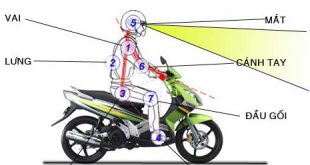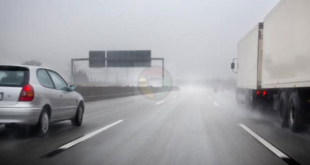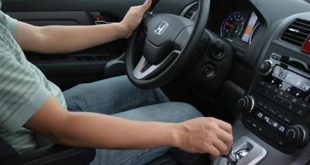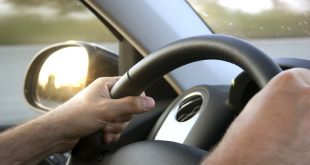Proper driving technique is a collection of knowledge, skills and operations necessary to operate a car safely, effectively and in compliance with traffic laws. Good driving techniques not only help drivers move safely on the road but also contribute to protecting themselves, their families and other road users.
To drive a car safely, drivers need to master basic knowledge and be proficient in driving position techniques, car control techniques, techniques for handling driving situations and driving on vehicles. different road shapes.
In addition, you need to have experience driving in bad weather conditions, know how to safely handle car problems on the road, and create safe driving habits for peace of mind on every journey.
If you do not have a driver's license or are not confident with your driving skills, you can participate in training courses and test for driving licenses for cars B1, B2, C,... or supplementary driving courses at City Driving Test & Training Center. Ho Chi Minh City.
This article will present some car driving techniques Basics that anyone who wants to drive safely and effectively needs to understand. Let's explore now!

Technical Instructions for Driving a Car Correctly and Safely
To drive a car safely, drivers need to master basic knowledge and be proficient in driving position techniques, car control techniques, techniques for handling driving situations and driving in all types of vehicles. different roads.
1. Master basic knowledge
Mastering the fundamental knowledge helps you drive a car safely and properly according to regulations of the Ministry of Transport.
Some knowledge you need to master before operating a car includes:
- Road traffic laws: Including laws on right of way, traffic signs, speed limits, yield rules...
- Structure and operation of a car: Understand the main parts such as brakes (ABS, EBD), throttle, steering wheel, transmission (automatic, manual), suspension system... and how it works they.
- Traffic safety: Understand the importance of traffic safety, factors that affect safety such as speed, visibility, braking... and safety measures such as airbags, seat belts, parking spots, etc. blind.
- Accident prevention: Skills to handle unexpected situations, emergency braking, keeping a safe distance from the vehicle in front, how to handle incidents such as tire explosion, vehicle stalling, etc.
2. Note the car's driving position
To ensure safety and comfort while driving, you need to adjust the driver's seat, rearview mirror, tighten the seat belt and check the car's control functions.
- Adjusting the driver's seat: The height, distance, and tilt of the seat need to be adjusted so that the driver can see clearly ahead, easily operate the pedals, and sit straight.
- Adjust the rearview mirror: The inside rearview mirror needs to be adjusted so that you can see the entire rear of the vehicle. As for the outside rearview mirror, you must observe the road behind the vehicle and the vehicles moving next to it.
- Wear a seat belt: The seat belt needs to be placed across the shoulders and across the hips just tight enough, not too loose or too tight.
- Check the control functions:
- Lights: Turn on lights to ensure visibility when driving in low light conditions.
- Signal lights: Turn on the signal lights to signal other vehicles when you want to change direction or stop.
- Handbrake: Pull the handbrake to keep the car in place when parking.
- Rain wipers: Turn on the wipers to ensure visibility when driving in rainy conditions.
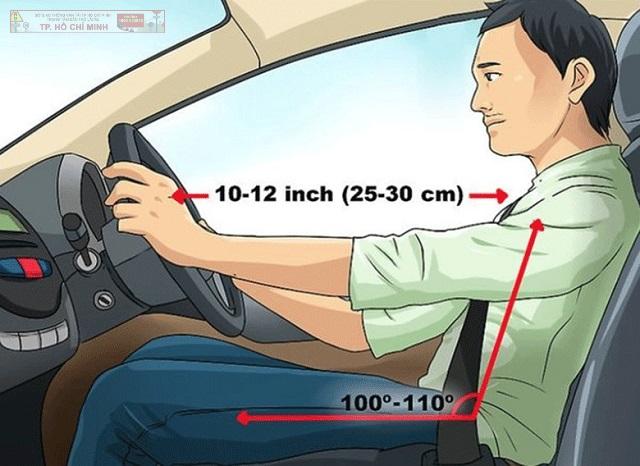
3. Driving a car
To drive a vehicle safely, drivers need to master and practice good steering, braking, gear shifting, throttle control, stopping and parking skills.
Driving skills:
- Steering forward: Use the steering wheel to turn clockwise to turn the vehicle to the right.
- Reverse steering: Use the steering wheel to turn counterclockwise to turn the vehicle to the left.
- Return the steering wheel: After changing direction, return the steering wheel to the original position so that the vehicle moves straight.
Braking skills:
- Right foot brake (throttle): Use your right foot to step on the brake to slow down or stop the vehicle.
- Left foot brake: Use the left foot to brake (usually used in emergencies).
- Handbrake: Use your hand to pull the handbrake to keep the car steady when parking.
Gear shifting skills (manual transmission car):
- Clutch: Release the clutch slowly when shifting gears.
- Throttle: Release the accelerator and step on the clutch when shifting gears.
- Release the accelerator slowly: After shifting gears, release the accelerator slowly to allow the vehicle to accelerate smoothly.
Throttle control:
- Maintain steady speed: Hold the accelerator steadily to maintain the desired speed.
- Accelerate: Press the accelerator harder to increase speed.
- Decelerate: Release the accelerator or step on the brake to slow down.
Stopping and parking:
- Right foot brake: Use your right foot to brake to slow down and stop the vehicle.
- Handbrake: Pull the handbrake to keep the car in place when parking.
- Put into P gear (automatic): Put into P gear when parking to prevent the car from drifting.
- Turn off the engine: Turn off the engine after parking.
4. Techniques for handling car driving situations on the road
Some common situations when driving a car on the road such as going straight, turning left, turning right, going on curves, going on steep roads, drivers need to have solid driving techniques to handle the above situations.
- Go straight: Drive the vehicle straight in the lane, without encroaching on other lanes. Look ahead, pay attention to vehicles moving in the opposite direction, the same direction and pedestrians.
- Turn left, turn right: Turn on the turn signal at least 30 meters before changing direction. Observe rearview mirrors and blind spots to ensure safety. Slow down and make right/left turns in the desired direction, paying attention to giving way to other moving vehicles.
- Taking curves: Reduce speed before entering the corner. Drive slowly, keeping the corner close to the curb. Avoid braking suddenly while cornering.
- Going on steep roads: Use a low gear (manual gear) to increase the engine's braking power. Avoid sudden braking to avoid slipping. Use the right foot brake (gas) to adjust the appropriate speed.
- Overtaking: Turn on the turn signal before passing. Observe safety ahead and behind, making sure there are no vehicles moving in the opposite direction. Overtake decisively, do not prolong the overtaking time.
5. Driving techniques on different types of roads
Each traffic route will have its own characteristics, so you need to master driving skills on each type of road to ensure safety for yourself and other traffic participants.

Freeway:
Expressways have wide pavement, many lanes, high traffic density, high allowed speeds, few intersections and obstacles.
When driving on these routes, you need to:
- Keep the minimum speed according to regulations.
- Maintain a safe distance from other vehicles.
- Turn on your headlights when it's dark or visibility is poor.
- Do not swing or swerve.
- Use the appropriate lane.
- Obey signs and road markings.
Steep mountain pass:
Steep mountain passes have narrow surfaces, many curves, high slopes, and limited visibility.
If traveling on steep mountain passes, drivers should pay attention to:
- Use a low gear to increase engine braking power.
- Avoid sudden braking to avoid slipping.
- Use the right foot brake (gas) to adjust the appropriate speed.
- Watch carefully for sharp turns.
- Turn on your headlights when it's dark or visibility is poor.
Slippery road:
Slippery roads caused by rain, snow or fog can reduce the vehicle's ability to grip the road, easily causing traffic accidents.
When traveling on slippery roads, you should drive slowly, steer gently, avoid sudden braking, create a safe distance from the vehicle in front and turn on warning lights when necessary.
Inner city roads:
Inner city roads have high traffic density, many pedestrians, motorbikes and bicycles, many intersections and signal lights.
Treatment:
- Carefully observe signs and road markings.
- Pay attention to pedestrians and other vehicles.
- Reduce speed when passing through densely populated areas.
- Use headlights and horns appropriately.
- Always give way to pedestrians.
Frequently Asked Questions When Driving A Car
1. How to drive a car in bad weather conditions?
Driving in bad weather conditions such as heavy rain, fog, snow... can be potentially dangerous. Therefore, you need to slow down, keep a safe distance, use lighting systems and windshield wipers properly, avoid going through flooded areas, brake gently, pay attention and comply with safety rules. to ensure safe driving in bad weather conditions.
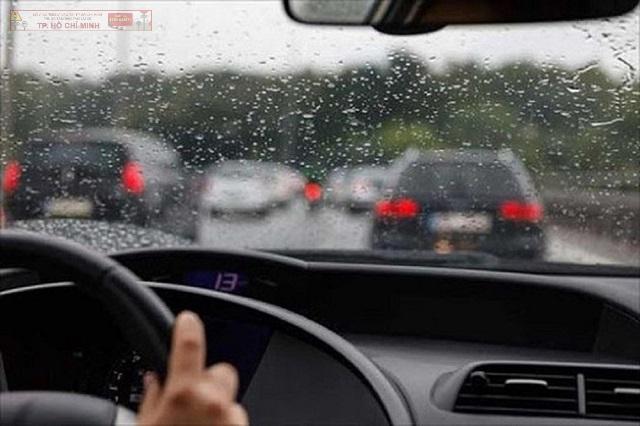
Here are some notes when driving in bad weather conditions:
- Prepare before going: Check the car's condition before hitting the road, including checking the brake system, lights, tires and mirror equipment. Secure fire extinguisher, spare wheel and other necessary tools.
- Reduce speed: Reduce speed in accordance with weather and visibility conditions. Keep a safe distance from other vehicles and avoid sudden braking to limit slipping.
- Use lighting: In bad weather such as rain, snow, fog or at night, use lighting to increase your ability to see and be seen. Turn on fog lights (if available) to provide better visibility in hazy, foggy or rainy conditions.
- Use windshield wipers: Turn on windshield wipers appropriate to the rain intensity. Be sure to replace wipers periodically to ensure effective operation.
- Avoid going through flooded areas: Flooded water can cause your vehicle to stall or be damaged. If you must pass, go slowly and pay close attention.
- Avoid sudden braking: When driving on slippery or slippery roads, avoid sudden braking. Use the brakes gently and continuously to gradually slow down and avoid skidding.
- Keep a safe distance: In bad weather conditions, your reaction time may be affected, so keep a safe distance between your vehicle and the vehicle in front. Increase the safe distance to at least twice that of normal weather conditions to allow sufficient reaction and braking time.
- Pay attention to other vehicles: Monitor surrounding vehicles and react promptly when necessary. Be wary of large trucks, buses or other vehicles that can cause windshield damage to obscure visibility.
- Follow safety rules: Always wear seat belts and make sure all passengers wear seat belts. Hold the steering wheel firmly and focus on driving.
In addition, you can refer to the article sharing some Experience driving a car in the rain Helps you have the safest journeys.
2. How to handle when a car has a problem on the road?
When encountering a car accident on the road, make sure to stop the car in a safe location, warn other vehicles, assess the vehicle's condition and contact support if necessary.
When your car has a problem on the road, you need to comply with the following:
- Ensure safety: First, ensure the safety of you and everyone around you by stopping the car in a safe location and quickly turning on the hazard warning lights. If possible, move the vehicle out of the main lane or out of the danger zone to avoid obstructing traffic.
- Give warning: When the vehicle is parked, turn on hazard lights, including warning lights, brake lights, tail lights and turn signals. This helps notify other vehicles and reduces the risk of an accident.
- Assess the condition: Determine the cause of the vehicle problem and check to see if anyone is injured.
- Contact support: If you cannot fix the problem yourself, call rescue or ask for help: car rescue center, traffic police, relatives, friends...
Some other notes:
- Do not attempt to repair your car if you do not have the expertise.
- If your vehicle has a problem on the highway, move to the emergency stop lane.
- Pay attention to safety when moving your vehicle to the side of the road.
3. What safe driving habits should be followed?
To drive safely, you need to maintain habits such as observing regularly, signaling a turn before changing direction, keeping a safe distance, focusing on driving, not driving when sleepy or drunk, and respecting pedestrians. . To help you learn more safe driving skills, see these long distance car driving experience Safe, should not be overlooked.
Some safe driving habits that drivers need to follow:
- Observe regularly: Always observe and check the rearview mirror, front mirror, rear mirror and both sides of the vehicle to understand the surrounding situation. This helps you recognize other vehicles and ensure safety during travel.
- Turn signal before changing direction: Before making any changes, turn on your turn signal to warn other vehicles of your direction of travel. This helps reduce the risk of collision and allows other vehicles to react promptly.
- Keep a safe distance from the vehicle in front: According to the 3-second rule, keep a safe distance from the vehicle in front to have time to react and brake promptly when necessary. This helps reduce the risk of a frontal collision.
- Concentrate on driving: Concentrate on driving and limit the use of cell phones, audio devices or other distracting activities. This helps you recognize and react promptly to unexpected situations on the road.
- Do not drive when drowsy or drunk: Make sure you are always alert and ready to drive. If you are tired or show signs of drowsiness, you should stop and rest. In addition, never drive while drinking alcohol or using substances that affect your ability to drive.
- Respect pedestrians: Respect and pay attention to pedestrians, including children, the elderly and pedestrians. Slow down when passing through densely populated areas or schools and give way to pedestrians when necessary.
4. Where should I study for the driver's license test and learn how to practice driving a car?
If you need to learn a B1, B2, C... or driver's license additional car steering wheel then City Driving Test & Training Center. Ho Chi Minh City is the reputable address you need to find. Licensed to operate officially, we are committed to providing students with the necessary knowledge and skills to drive a car safely and pass the exam.

Advantage:
- Ensuring the quality of training and testing according to the provisions of law.
- A team of highly specialized teachers and dedicated instructors with many years of experience in the field of driver training.
- Fully equipped with facilities, spacious practice yard, new driving practice vehicles to serve the learning and practice process of students.
- Reasonable cost, suitable for many subjects.
- Scientific training roadmap helps students acquire knowledge and skills in a systematic way.
- High test passing rate.
- The school has many flexible class schedules to meet the needs of students.
Come to City Driving Test & Training Center. Ho Chi Minh City, you don't need to worry about paying tuition but not being able to study or take exams, incurring too many expenses than expected... Contact us now for more specific advice.
 Driving test & training school in Ho Chi Minh City Training, teaching and driving test school in Ho Chi Minh City
Driving test & training school in Ho Chi Minh City Training, teaching and driving test school in Ho Chi Minh City



